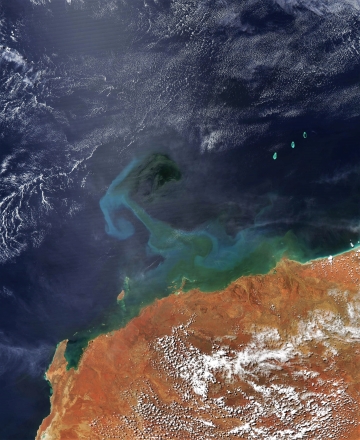700423_Green Storm_360 px width.jpg

Tropical Cyclone Oma in the Coral Sea was not a very intense storm, but it lingered for days and created a vortex on the bottom of the ocean that pulled cold, nutrient rich water to the surface, causing a phytoplankton bloom. Credit: NASA Worldview
A tropical storm doesn’t have to be big to have a big impact. In 2019, for example, a hundred thousand square miles of the Coral Sea, east of Australia, turned green after the passage of Tropical Cyclone Oma. The storm’s winds topped out at just 80 miles per hour—the equivalent of a category one hurricane. Yet it lingered over the same patch of ocean for days. When it dissipated, the ocean was much greener—the result of a massive “bloom” of tiny organisms known as phytoplankton.
Oma’s winds created a “vortex” on the bottom of the ocean. That pulled cold water from the bottom to the surface. In fact, the surface water temperature dropped by about seven degrees Fahrenheit in just a week.
The colder waters held large amount of nutrients. They fed phytoplankton at the surface, causing a population explosion. The phytoplankton contain a lot of chlorophyll—the material that makes plants look green. So satellite photos showed that the surface of the Coral Sea turned greener—and stayed that way for weeks.
A research team studied satellite records of tropical cyclones in the region dating back to 1997. They found 14 other “blooms” after the passage of slow-moving storms. But the one from Oma was by far the biggest.
When the bloom ended, dead phytoplankton fell to the bottom. Deeper layers of sediments might record earlier blooms. Digging into those layers might provide new insights into how Earth’s climate has changed over the centuries.

